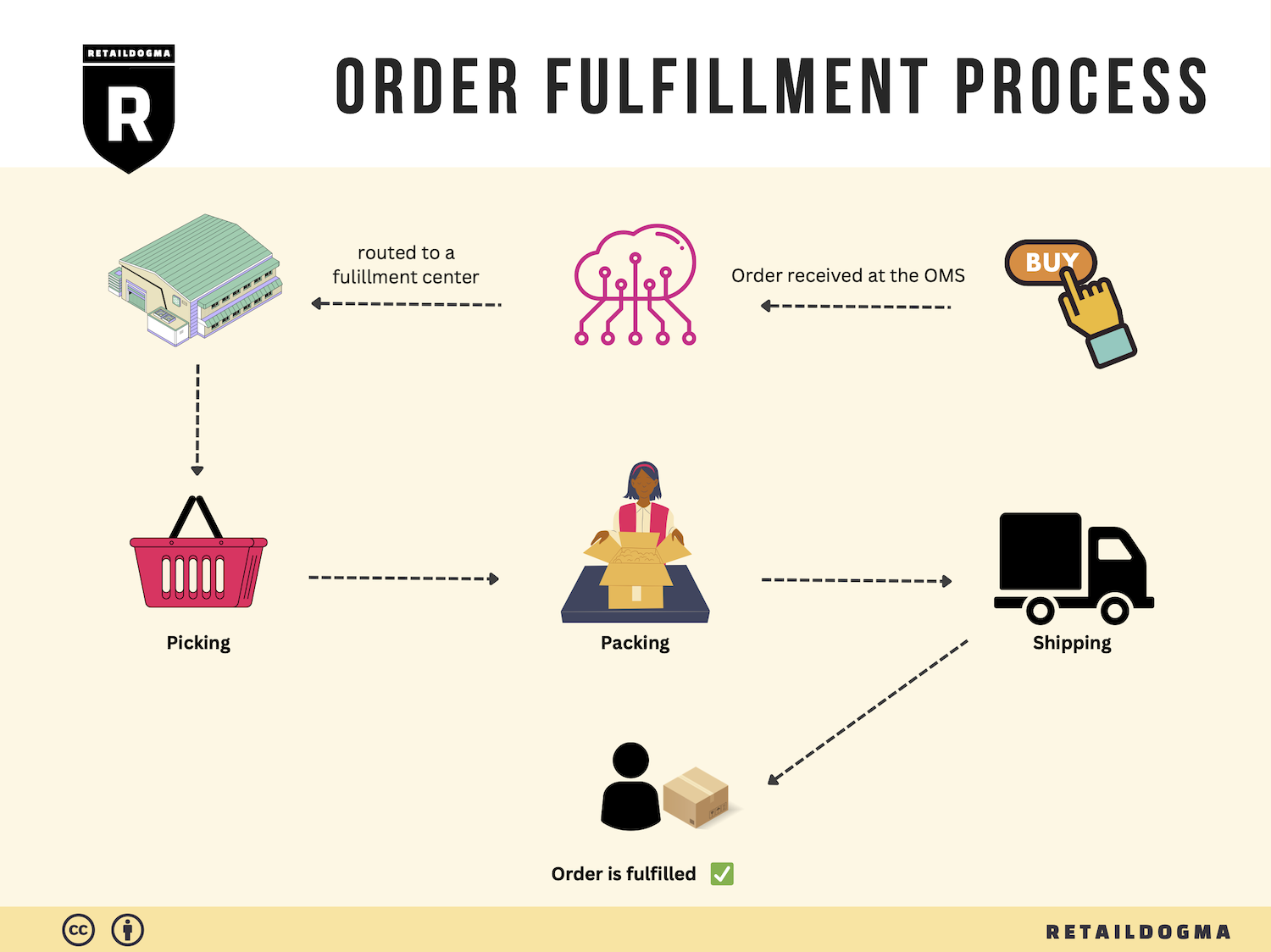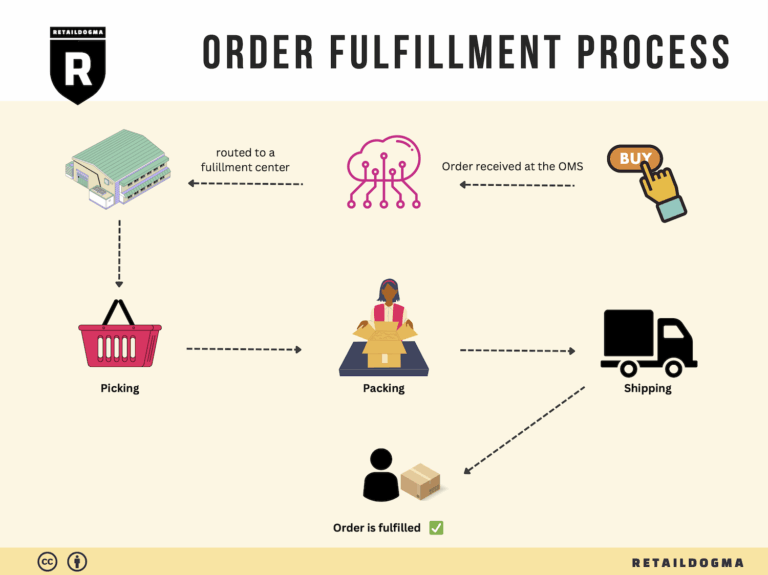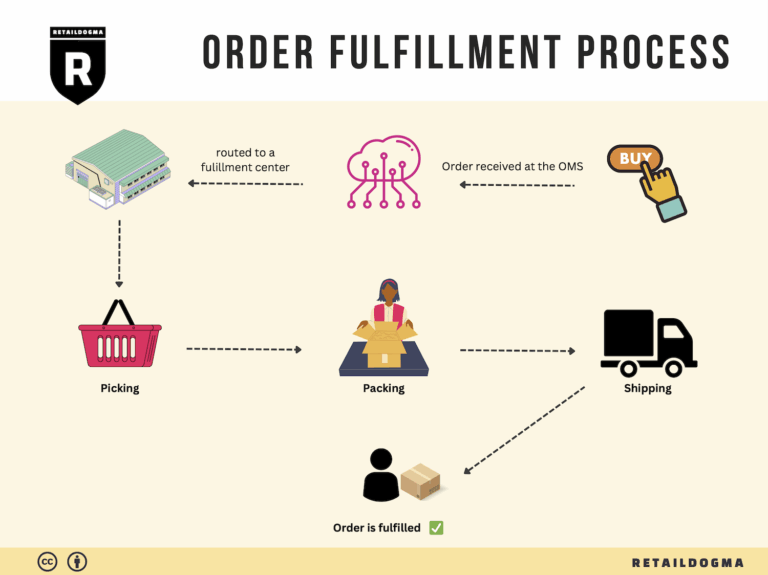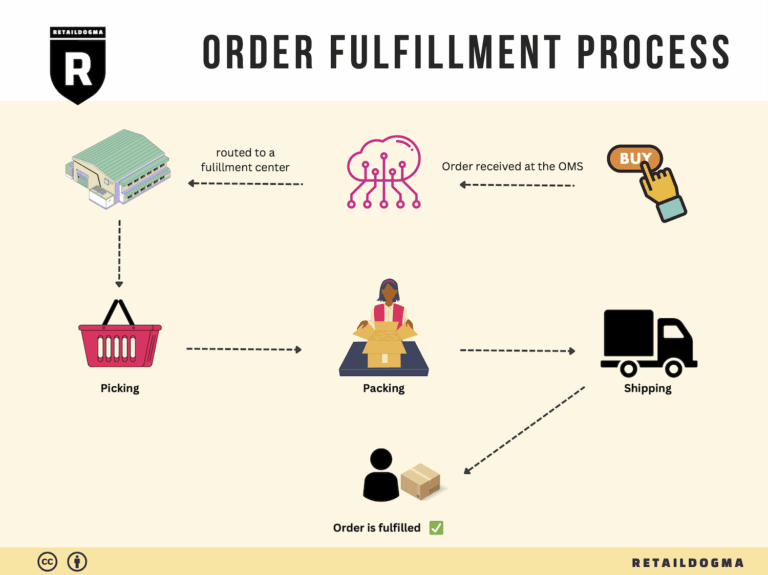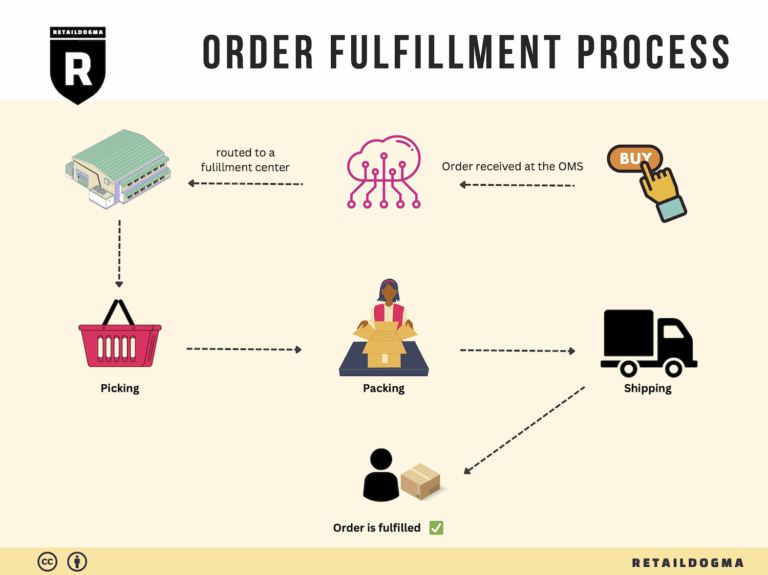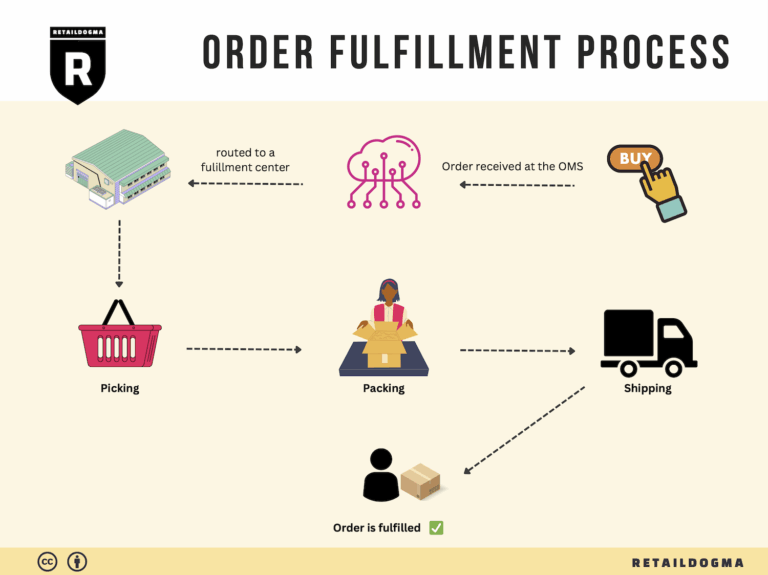What Is A Fulfillment Center? A Complete Guide (2025)
What is E-commerce Fulfillment? An Introduction for Growing Businesses
As your e-commerce business begins to grow, you may find yourself overwhelmed with the logistical challenges of packing and shipping orders. The excitement of increasing sales can quickly turn into stress as you juggle inventory management, order processing, and the complexities of shipping logistics. This is where e-commerce fulfillment comes into play.
E-commerce fulfillment is the comprehensive process of getting your products from your inventory to your customers’ doorsteps. This includes everything from receiving and storing inventory to picking, packing, and shipping orders. Understanding this process is crucial for any growing business that aims to maintain customer satisfaction while scaling operations.
In this guide, we will explore the various fulfillment models available to e-commerce businesses, including Third-Party Logistics (3PL) and Fulfillment by Amazon (FBA). Each model has its unique benefits and challenges, and choosing the right one can significantly impact your operational efficiency and customer experience.
We will also delve into the core services involved in the fulfillment process, such as inventory management, order processing, shipping, warehousing, and returns management. Knowing how these services work together will help you identify areas for improvement and streamline your operations.
Choosing the right fulfillment partner is another critical aspect we will cover. Partnering with an experienced provider can alleviate the burden of logistics, allowing you to focus on growth strategies and core business activities. We will provide insights on what to look for in a fulfillment partner, including technology, service offerings, and scalability.
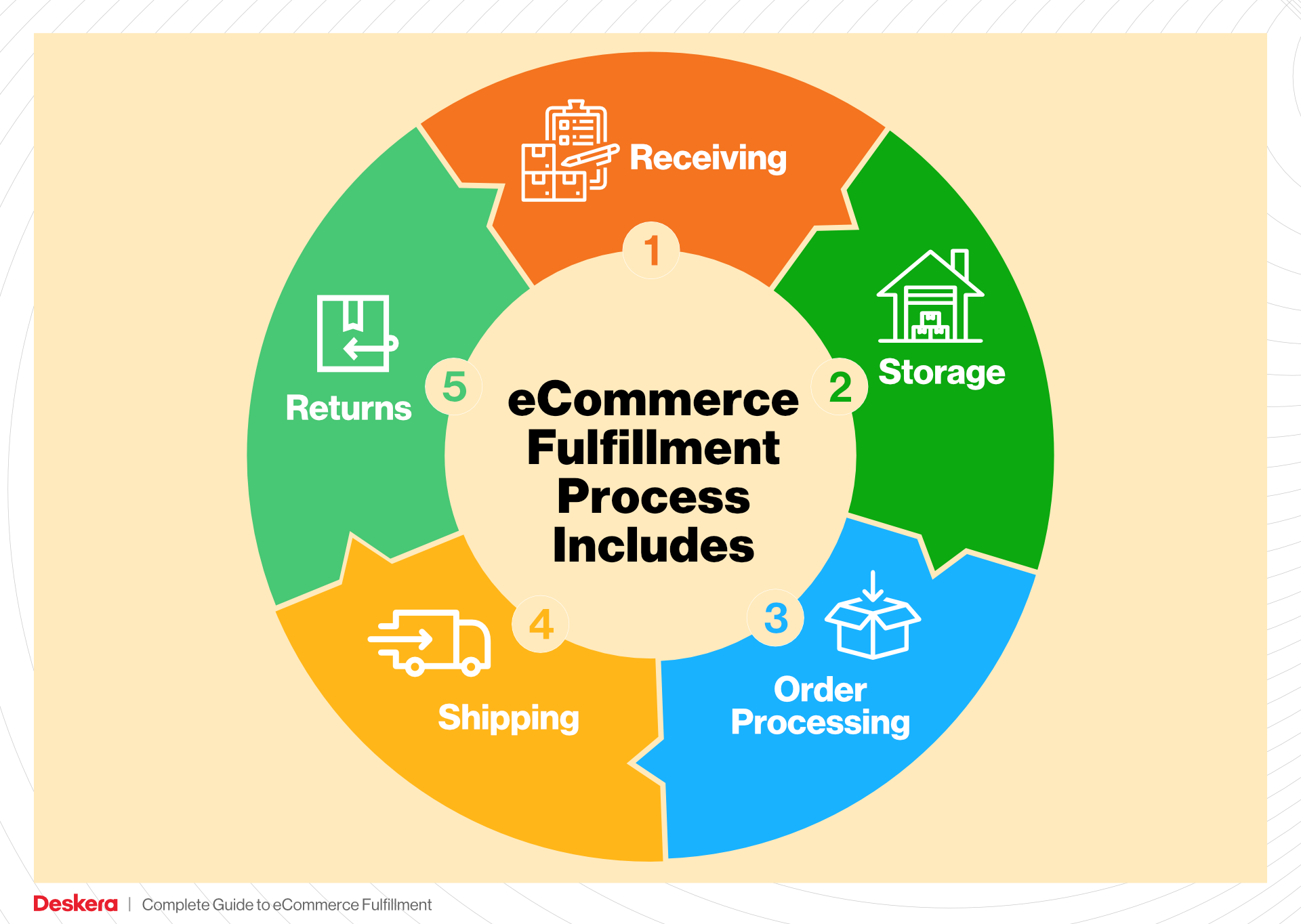
Additionally, we will discuss fulfillment pricing—an essential factor for maintaining your bottom line. Understanding the cost structures associated with different fulfillment models will empower you to make informed financial decisions that align with your growth objectives.
Ultimately, this guide aims to equip you with the knowledge and tools necessary to make strategic decisions about your logistics. By understanding e-commerce fulfillment, you can enhance your operational efficiency, delight your customers, and pave the way for sustainable growth.
What You’ll Learn In This Guide
- What is E-commerce Fulfillment? An Introduction for Growing Businesses
- The Order Fulfillment Process: From ‘Buy’ Button to Customer’s Door
- Comparing Fulfillment Models: In-House vs. 3PL vs. Dropshipping
- A Deep Dive into Amazon FBA: Pros, Cons, and Who It’s For
- Core Services Offered by Fulfillment Centers
- How to Choose a Fulfillment Partner: A 6-Point Checklist
- Understanding Fulfillment Pricing: A Breakdown of Common Fees
- Frequently Asked Questions (FAQs) about Fulfillment
- Conclusion: Is Outsourcing Fulfillment the Right Move for Your Business?
- Important Disclaimer
The Order Fulfillment Process: From ‘Buy’ Button to Customer’s Door
1. Receiving Inventory
The first step in the order fulfillment process is receiving inventory. This involves the acceptance of goods from suppliers or manufacturers into your warehouse or fulfillment center. During this stage, products are typically checked against purchase orders to ensure accuracy in quantity and quality. Each item is assigned a Stock Keeping Unit (SKU), which is a unique identifier that helps in tracking inventory throughout the supply chain.
Importance: Proper receiving processes are crucial for maintaining inventory accuracy and avoiding discrepancies. If items are not accurately received, it can lead to stockouts or overstocking, both of which can negatively impact sales and customer satisfaction. Efficient receiving also lays the foundation for effective inventory management, which is vital for scaling your operations.
2. Warehouse Storage
Once the inventory is received, it is moved to a designated storage area within the warehouse. This step involves organizing products in a systematic way that optimizes space and facilitates easy access. Effective warehousing strategies often utilize warehouse management systems (WMS) to track inventory locations and manage stock levels.
Importance: Proper warehouse storage is essential for quick retrieval of items when orders are placed. An organized warehouse minimizes the time spent locating products, which directly impacts order fulfillment speed. Additionally, effective storage solutions help reduce the risk of damage to inventory and ensure that items remain in sellable condition.
3. Order Picking
When a customer places an order, the fulfillment process moves to order picking. This step involves selecting the correct items from the warehouse based on the order details. Fulfillment centers often use pick lists—documents that outline the items to be retrieved, their locations, and quantities—to streamline this process.
Importance: Order picking is a critical phase as it directly affects order accuracy and fulfillment speed. Errors in picking can lead to incorrect orders being sent to customers, resulting in returns and a negative customer experience. Efficient picking processes can significantly improve order turnaround times, which is increasingly important in today’s fast-paced e-commerce environment.
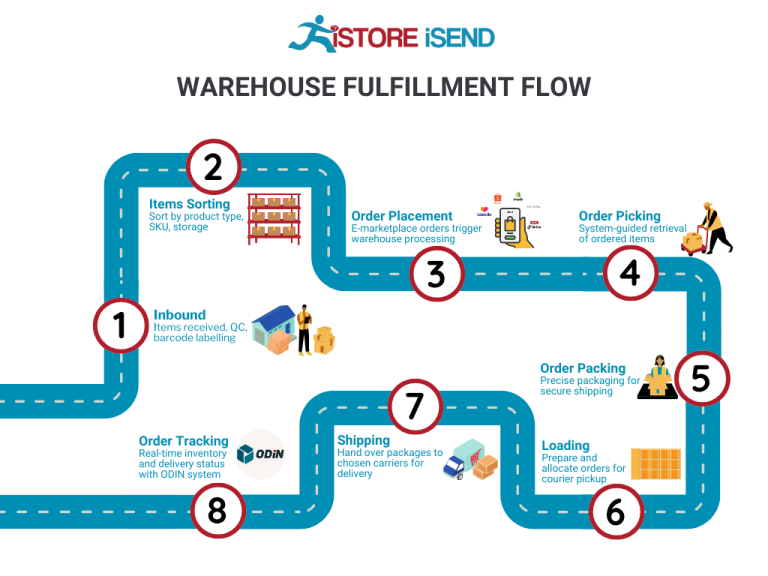
4. Order Packing
After items have been picked, they are moved to the packing station where they are prepared for shipment. During this stage, products are carefully packed into boxes, with attention given to using appropriate packing materials to prevent damage during transit. Packing lists and shipping labels are generated to accompany the order.
Importance: Proper packing is essential for protecting products and ensuring they arrive at the customer’s location in pristine condition. It also serves to enhance the unboxing experience for customers, which can contribute to brand loyalty. Additionally, effective packing can help optimize shipping costs by minimizing the size and weight of packages, thus reducing overall fulfillment expenses.
5. Shipping & Delivery
The final step in the order fulfillment process is shipping and delivery. Once orders are packed, they are handed off to shipping carriers for transportation to the customer’s address. This stage includes generating tracking numbers, which allow customers to monitor their order’s journey. Fulfillment providers often have established relationships with multiple carriers, enabling them to offer competitive shipping rates and options.
Importance: Timely and accurate shipping is critical for customer satisfaction. Today’s consumers expect fast delivery times, often within two days, and any delays can result in dissatisfaction and lost sales. By leveraging a fulfillment provider’s resources, businesses can ensure reliable shipping and capitalize on economies of scale, which can lead to cost savings and improved service levels.
In conclusion, each step of the order fulfillment process—from receiving inventory to shipping and delivery—is interconnected and plays a vital role in meeting customer expectations. By optimizing these processes, e-commerce businesses can enhance operational efficiency, improve customer satisfaction, and ultimately scale their operations successfully.
Comparing Fulfillment Models: In-House vs. 3PL vs. Dropshipping
Fulfillment Model Comparison
| Model | Who Handles Inventory | Best For (Business Stage) | Key Advantage | Key Disadvantage |
|---|---|---|---|---|
| In-House Fulfillment | Business Owner | Startups or Small Businesses | Full control over operations | High overhead costs |
| Third-Party Logistics (3PL) | Fulfillment Provider | Growing or Established Businesses | Scalable and efficient operations | Less control over inventory |
| Dropshipping | Supplier or Manufacturer | New Businesses or Niche Brands | Low startup costs and inventory risk | Lower profit margins and longer shipping times |
In-House Fulfillment
In-house fulfillment is the model where a business manages its own inventory, warehousing, and order processing. This approach allows business owners to maintain full control over their operations, including inventory management, order accuracy, and customer service. For startups and small businesses, in-house fulfillment can be appealing as it allows for a hands-on approach, fostering a deeper understanding of the operational intricacies and customer preferences. However, as the business scales, the overhead costs associated with warehousing, staffing, and logistics can become burdensome. This model often leads to inefficiencies as the business grows, particularly in managing large volumes of orders and maintaining fast shipping times. Owners may also find themselves stretched thin, balancing operational tasks with strategic growth initiatives.
Third-Party Logistics (3PL)
Third-party logistics (3PL) involves outsourcing fulfillment operations to specialized providers that handle warehousing, inventory management, order processing, and shipping. This model is particularly beneficial for growing or established businesses seeking to scale efficiently without investing heavily in infrastructure. By partnering with a 3PL, businesses can leverage the provider’s expertise, technology, and established shipping networks, resulting in faster shipping times and reduced costs through bulk rates. Additionally, 3PLs often provide advanced inventory management systems, allowing businesses to focus on marketing and sales rather than logistics. However, the trade-off is a reduced level of control over inventory and fulfillment processes. Businesses may find it challenging to maintain brand consistency and customer service standards, especially if the 3PL does not align closely with their operational philosophy.
Dropshipping
Dropshipping is a fulfillment model where the retailer does not hold inventory but instead relies on suppliers or manufacturers to fulfill orders directly to customers. This model is particularly appealing for new businesses or niche brands with limited resources, as it requires minimal upfront investment and eliminates the risks associated with unsold inventory. With dropshipping, entrepreneurs can focus on marketing and customer acquisition without worrying about warehousing or shipping logistics. However, dropshipping can come with significant downsides, such as lower profit margins since suppliers typically take a cut of the sale. Additionally, shipping times may be longer, and quality control can be a concern, as the retailer has no direct oversight of the fulfillment process. This model often leads to challenges in customer satisfaction if products do not meet expectations, which can harm brand reputation over time.
Conclusion
Choosing the right fulfillment model is crucial for e-commerce success. Each approach—whether in-house fulfillment, 3PL, or dropshipping—offers unique advantages and disadvantages that can significantly impact your business operations and customer satisfaction. It is essential to evaluate your current business stage, operational capabilities, and long-term growth goals when deciding which fulfillment strategy best aligns with your vision. As your business evolves, being open to adjusting your fulfillment model can lead to enhanced efficiency, cost savings, and improved customer experiences.
A Deep Dive into Amazon FBA: Pros, Cons, and Who It’s For
Understanding Fulfillment by Amazon (FBA)
Fulfillment by Amazon (FBA) is a service offered by Amazon that allows sellers to store their products in Amazon’s fulfillment centers. Amazon then takes care of storage, packaging, shipping, and customer service on behalf of the seller. This model has gained popularity among e-commerce entrepreneurs due to its potential to streamline operations and enhance customer satisfaction.
When a customer orders a product through Amazon, the fulfillment process is initiated. Amazon picks the product from its warehouse, packs it, and ships it directly to the customer. Additionally, Amazon handles returns and customer inquiries related to those orders. This comprehensive service allows sellers to focus on other aspects of their business, such as product development and marketing.
How FBA Works
-
Setting Up Your FBA Account: Sellers need to create an Amazon Seller account and enroll in the FBA program. This involves providing details about the business and agreeing to Amazon’s terms and conditions.
-
Product Listing and Preparation: Sellers prepare their products for shipment to Amazon’s warehouses. This includes labeling items according to Amazon’s guidelines, ensuring that they meet quality standards, and packaging them appropriately.
-
Shipping Inventory to Amazon: Once the products are ready, sellers ship their inventory to Amazon’s fulfillment centers. Amazon provides sellers with shipping labels and guidelines to ensure that products arrive at the correct location.
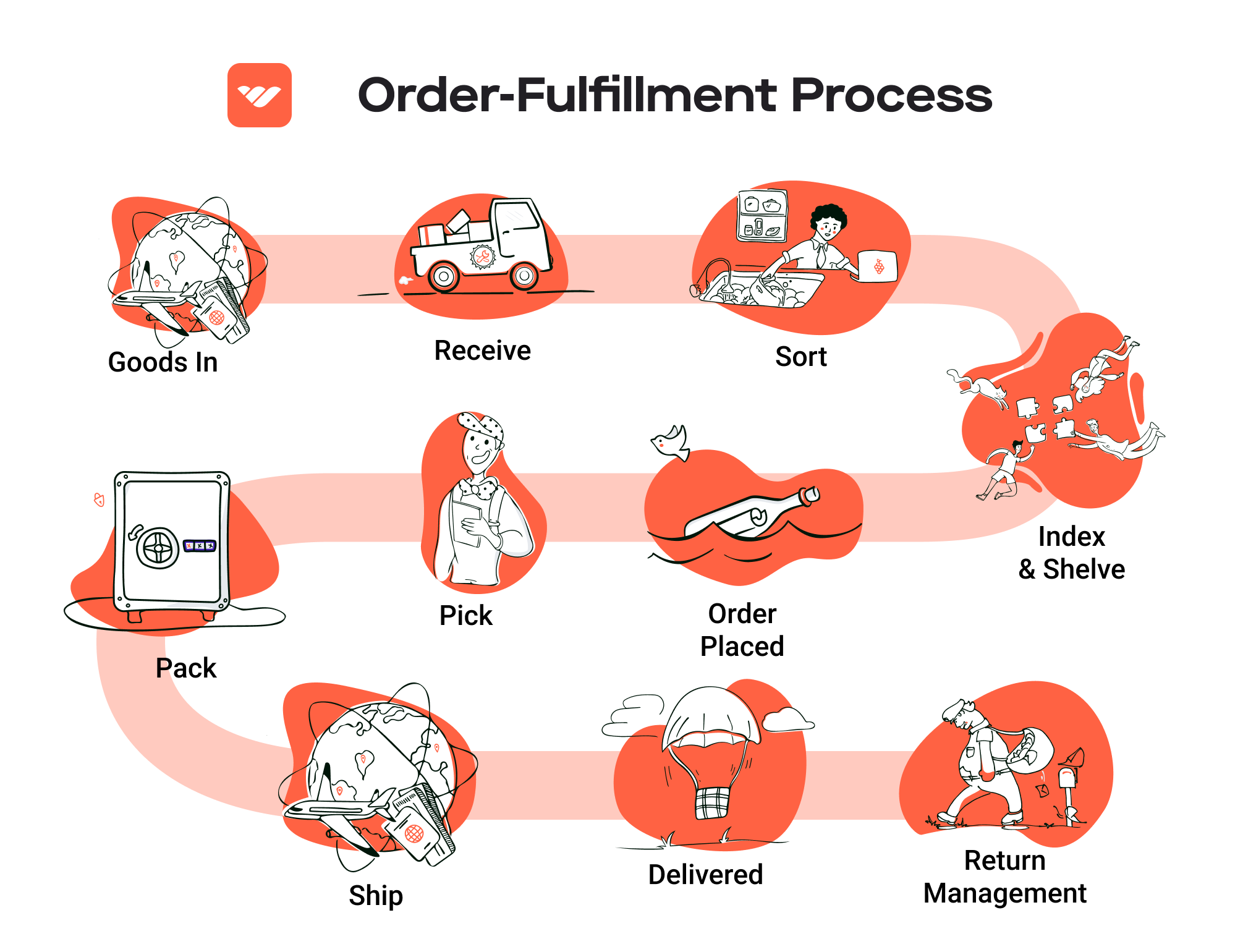
-
Storage and Fulfillment: After the inventory is received, Amazon stores the products in its warehouses. When a customer places an order, Amazon picks, packs, and ships the product directly to the customer.
-
Customer Service and Returns: Amazon manages all customer service inquiries and handles returns, making the process seamless for both sellers and customers.
Pros of Using FBA
-
Prime Eligibility: Products fulfilled by Amazon automatically qualify for Amazon Prime, which can significantly increase sales. Prime members often prefer Prime-eligible products due to the benefits of fast, free shipping.
-
Customer Trust: Amazon is a well-established brand with a strong reputation for reliability. By using FBA, sellers can leverage Amazon’s brand trust, which can lead to higher conversion rates and repeat purchases.
-
Multi-Channel Fulfillment: FBA allows sellers to fulfill orders not only from Amazon but also from their own websites or other platforms. This flexibility can help businesses expand their reach and streamline logistics across different sales channels.
-
Scalability: FBA provides a scalable solution for growing businesses. As sales increase, sellers can easily send more inventory to Amazon without worrying about the logistics of storage and fulfillment.
-
Time Savings: With Amazon managing storage, packing, and shipping, sellers can save time and focus on other critical areas of their business, such as marketing and product sourcing.
Cons of Using FBA
-
High Fees: FBA involves various fees, including storage fees for inventory and fulfillment fees for each order processed. For businesses with thin margins, these costs can add up quickly and affect profitability.
-
Strict Inventory Rules: Amazon has strict policies regarding inventory management. Sellers must adhere to guidelines for storage limits, product preparation, and labeling. Non-compliance can result in additional fees or even account suspension.
-
Commingling Risks: FBA uses a commingling system, meaning that products from different sellers may be stored together. This can pose risks if there are issues with counterfeit or damaged products, as it can lead to negative reviews and potential liability for the seller.
-
Limited Control Over Fulfillment: By outsourcing fulfillment to Amazon, sellers relinquish control over the shipping process. This can lead to inconsistencies in packaging and shipping times, which may not align with the seller’s brand standards.
-
Dependency on Amazon: Relying heavily on FBA can create dependency on Amazon for sales and fulfillment. Any changes to Amazon’s policies, fees, or algorithms can directly impact a seller’s business.
Who is FBA Best For?
Fulfillment by Amazon is particularly well-suited for:
-
Small to Medium-Sized Sellers: Businesses that are just starting or looking to scale quickly can benefit from FBA’s infrastructure without the need for significant upfront investments in logistics.
-
Brands with Limited Resources: Sellers who lack the time, expertise, or capital to manage their own fulfillment operations can leverage FBA to access Amazon’s extensive network and capabilities.
-
Sellers with High Sales Volume: Businesses that anticipate high order volumes can benefit from Amazon’s economies of scale, allowing them to offer competitive pricing and fast shipping.
-
E-commerce Entrepreneurs Focused on Growth: For those looking to expand their product offerings or enter new markets, FBA provides a flexible and efficient solution for scaling operations.
In summary, while FBA presents numerous advantages, such as enhanced visibility and operational efficiency, it also comes with challenges that sellers must navigate. Understanding these dynamics is crucial for e-commerce business owners as they consider whether FBA aligns with their long-term growth strategies.
Core Services Offered by Fulfillment Centers
Inventory Management & Warehousing
Inventory management and warehousing are foundational services provided by fulfillment centers, critical to the smooth operation of any e-commerce business. Inventory management involves the systematic monitoring of stock levels, orders, sales, and deliveries. It ensures that businesses have the right amount of stock on hand to meet customer demand while minimizing excess inventory that ties up capital.
Warehousing, on the other hand, refers to the physical storage of products before they are shipped out. Fulfillment centers offer secure and organized spaces where goods can be stored efficiently. This dual functionality allows businesses to scale their operations without the burden of managing physical storage and inventory tracking.
Benefits:
1. Reduced Overhead Costs: By outsourcing warehousing and inventory management, businesses can eliminate the need for physical storage spaces, which can be costly and require ongoing maintenance.
2. Real-time Visibility: Fulfillment centers often utilize advanced inventory management systems that provide real-time data on stock levels, enabling businesses to make informed decisions about reordering and stock rotation.
3. Scalability: As e-commerce businesses grow, fulfillment centers can easily accommodate increased inventory needs without requiring significant investment in new facilities or technology.
Pick and Pack Services
Pick and pack services are central to the order fulfillment process. This involves selecting (or “picking”) the right products from the warehouse shelves and then packing them securely for shipment. Fulfillment centers employ trained staff and sophisticated technology to ensure accuracy and efficiency in this process.
The pick and pack service streamlines order processing, allowing businesses to fulfill customer orders quickly and accurately. This is especially important in today’s fast-paced e-commerce environment where customer expectations for speed and accuracy are higher than ever.
Benefits:
1. Speed and Efficiency: With dedicated staff and optimized processes, fulfillment centers can significantly reduce the time taken to process orders, which enhances customer satisfaction.
2. Accuracy in Fulfillment: Advanced technology, such as barcode scanning and inventory management software, minimizes the risk of errors during the picking and packing stages, ensuring customers receive the correct items.
3. Cost Savings: By outsourcing pick and pack services, e-commerce businesses can save on labor costs and reduce the need for extensive training and management of fulfillment staff.
Kitting and Assembly
Kitting and assembly services involve bundling multiple items together into a single package or creating finished products from individual components. This service is particularly beneficial for businesses that sell product bundles, subscription boxes, or customized items.
Fulfillment centers can manage the entire kitting process, from sourcing components to packaging the final product, allowing businesses to offer unique product offerings without the logistical headaches.
Benefits:
1. Customization Opportunities: Kitting allows e-commerce businesses to create tailored product offerings that can enhance customer engagement and satisfaction.
2. Streamlined Operations: By utilizing fulfillment centers for kitting and assembly, businesses can focus on their core competencies, such as marketing and product development, while leaving the complex logistics to experts.
3. Increased Order Value: Bundling products together can encourage customers to purchase more, leading to higher average order values and improved overall sales.
Returns Management (Reverse Logistics)
Returns management, or reverse logistics, is an essential service that addresses the process of handling returned products. This includes everything from receiving returned items, assessing their condition, processing refunds or exchanges, and reintegrating the products back into inventory.
An efficient returns management process is crucial for maintaining customer satisfaction and loyalty. Fulfillment centers can streamline this process, making it easier for customers to return items while minimizing the operational burden on e-commerce businesses.
Benefits:
1. Enhanced Customer Experience: A well-managed returns process can significantly improve customer satisfaction, as it provides a hassle-free way for customers to return unwanted or defective items.
2. Cost Efficiency: Fulfillment centers can help reduce the costs associated with returns by efficiently processing and reintegrating returned items into inventory, thus minimizing losses.
3. Data Insights: Returns management can provide valuable insights into customer preferences and product performance, helping businesses make informed decisions about inventory and product offerings.
In conclusion, partnering with a fulfillment center provides e-commerce businesses with a comprehensive suite of services that can streamline operations, enhance customer satisfaction, and ultimately drive growth. By leveraging the expertise and resources of fulfillment centers, businesses can focus on scaling their sales and improving their logistics without the complexities of managing these core functions in-house.
How to Choose a Fulfillment Partner: A 6-Point Checklist
Location & Warehouse Network
Importance: The geographical location of your fulfillment partner’s warehouses significantly impacts shipping times and costs. A strategically located warehouse network allows for faster deliveries and can reduce shipping fees, especially if your customer base is spread across various regions.
Questions to Ask:
– Where are your fulfillment centers located, and how does that align with my primary customer demographics?
– Do you have warehouses in multiple regions to facilitate faster shipping?
– How do you handle shipping costs based on the distance from your warehouses to the customer?
Technology & Integrations
Importance: Advanced technology can streamline your fulfillment processes, from order management to inventory tracking. A partner that offers robust software solutions and integrations with your existing e-commerce platforms can enhance efficiency and provide real-time visibility into your operations.
Questions to Ask:
– What technology do you use for order management and inventory tracking?
– Can your system integrate seamlessly with my existing e-commerce platforms (e.g., Shopify, WooCommerce, etc.)?
– Do you provide a dashboard for real-time tracking of orders and inventory levels?
Specializations (e.g., Cold Storage, Oversized Items)
Importance: Depending on the nature of your products, you may require specialized services. For instance, if you sell perishable goods, a partner with cold storage capabilities is crucial. Similarly, oversized items may need unique handling and storage solutions.
Questions to Ask:
– What types of specialized services do you offer (e.g., temperature-controlled storage, kitting, or assembly)?
– How do you handle the storage and shipping of oversized or fragile items?
– Can you accommodate any specific requirements for my product category (e.g., HAZMAT, bulk items)?
Scalability & Capacity
Importance: As your business grows, your fulfillment needs will evolve. A partner that can scale with you ensures that you won’t have to switch providers during critical growth phases, which can disrupt operations and customer satisfaction.
Questions to Ask:
– How do you manage peak seasons and fluctuations in order volume?
– What is your capacity for handling increased inventory and order fulfillment as my business grows?
– Are there any limitations on the types of products you can store or fulfill?
Pricing and Contracts
Importance: Understanding the cost structure and contractual obligations is essential to avoid unexpected expenses that could impact your profitability. Transparent pricing models help you budget effectively and assess the overall value of the partnership.
Questions to Ask:
– Can you provide a detailed breakdown of your pricing structure (e.g., storage fees, pick and pack fees, shipping costs)?
– Are there any hidden fees or additional costs I should be aware of?
– What are the terms of the contract? Is there flexibility if my needs change?
Customer Support & Reviews
Importance: Exceptional customer support can make a significant difference in your experience with a fulfillment partner. A responsive support team helps resolve issues quickly, ensuring minimal disruption to your operations. Additionally, customer reviews provide insights into the partner’s reliability and service quality.
Questions to Ask:
– What level of customer support do you provide (e.g., dedicated account manager, 24/7 support)?
– Can you share testimonials or case studies from other clients in my industry?
– How do you handle issues or disputes that may arise during the fulfillment process?
Conclusion
Choosing the right fulfillment partner is a critical decision that can influence your e-commerce business’s growth and customer satisfaction. By using this checklist, you can systematically evaluate potential partners based on essential criteria, ensuring that you select one that aligns with your business goals and operational needs. Remember that a well-chosen partner not only enhances your logistics but also contributes to the overall success of your brand in the competitive e-commerce landscape.
Understanding Fulfillment Pricing: A Breakdown of Common Fees
Initial Setup Fees
When you partner with a fulfillment provider like ShipBob, you may encounter initial setup fees. These fees typically cover the costs associated with onboarding your business into their system. This includes integrating your online store with their fulfillment platform, setting up your product catalog, and configuring shipping settings.
The calculation of initial setup fees can vary based on the complexity of your requirements. For example, businesses with a large number of SKUs or unique product specifications may incur higher fees. It is essential to clarify what is included in these fees, such as training or ongoing support, to avoid unexpected costs later on.
Receiving Fees
Receiving fees are charges applied when your inventory arrives at the fulfillment center. This fee typically covers the labor involved in unloading, inspecting, and storing your products. The calculation of receiving fees can vary depending on factors such as the volume of goods received, the complexity of the inventory (e.g., fragile items may require more care), and the frequency of shipments.
For instance, some providers may charge a flat rate per pallet or per hour of labor, while others may have a tiered structure based on the volume of goods. Understanding these factors can help you budget more effectively and avoid surprises when your inventory is processed.
Storage Fees (per pallet/bin)
Storage fees are recurring charges for the space your products occupy within the fulfillment center. These fees are generally calculated on a per pallet or per bin basis and can vary significantly depending on the size and type of inventory you store.
For example, if you are storing bulky items, you might pay a higher rate per pallet compared to smaller, more compact products. Additionally, some fulfillment providers implement a tiered pricing structure where the rate decreases as you store more pallets. It’s crucial to assess your inventory turnover rate; higher turnover can minimize storage costs, while slow-moving inventory can lead to increased fees.
Pick & Pack Fees (per item/order)
Pick and pack fees are charged for the labor involved in retrieving items from storage, packing them for shipment, and preparing them for delivery. These fees can be calculated on a per item or per order basis, depending on how your fulfillment provider structures their pricing.
Typically, a per item fee is charged for each SKU picked and packed, while a per order fee may apply if multiple items are included in a single shipment. Factors influencing these fees include the complexity of the order (e.g., custom packaging or kitting) and any special handling requirements. Understanding how these fees are structured can help you streamline your operations and potentially reduce costs by optimizing your order fulfillment processes.
Shipping Fees
Shipping fees are the costs associated with transporting your products from the fulfillment center to your customers. These fees are typically calculated based on several factors, including the shipping method chosen (standard, expedited, etc.), the destination (domestic or international), and the weight and dimensions of the package.
Many fulfillment providers leverage their shipping volume to negotiate discounted rates with carriers, which can lead to significant savings for your business. It’s essential to understand how these shipping fees are structured, as they can vary widely depending on the carrier used and the service level selected. Additionally, some providers may offer flat-rate shipping options, which can simplify budgeting and pricing strategies.
Tips for Getting an Accurate Quote
When seeking an accurate quote for fulfillment services, consider the following tips:
-
Provide Detailed Information: Be clear about your inventory types, order volume, and any special handling requirements. The more detailed your information, the more accurate the quote will be.
-
Ask About All Fees: Ensure you understand all potential fees involved, not just the base rate. Inquire about setup fees, storage costs, and any additional charges that may apply.
-
Evaluate Your Needs: Consider your business’s growth trajectory and how your fulfillment needs may change. Make sure the provider can accommodate scalability.
-
Compare Multiple Providers: Don’t settle for the first quote you receive. Compare offers from different fulfillment providers to ensure you’re getting the best deal.
-
Request a Comprehensive Breakdown: A detailed breakdown of costs will help you understand where your money is going and identify areas where you may be able to save.
By taking these steps, you can gain a clearer understanding of fulfillment pricing and make informed decisions that support your business’s growth.
Frequently Asked Questions (FAQs) about Fulfillment
1. What is ShipBob fulfillment?
ShipBob fulfillment is a third-party logistics (3PL) service that helps e-commerce businesses manage their order fulfillment process. It encompasses receiving, storing, picking, packing, and shipping products directly to customers. By partnering with ShipBob, businesses can streamline their logistics, improve shipping times, and focus on scaling their operations while ensuring customer satisfaction.
2. How does the fulfillment process work with ShipBob?
The fulfillment process with ShipBob typically involves several key steps:
1. Inventory Storage: Your products are stored in ShipBob’s fulfillment centers.
2. Order Processing: Once an order is placed on your e-commerce platform, ShipBob receives the order.
3. Picking and Packing: ShipBob staff pick the items from the inventory, pack them securely, and prepare them for shipping.
4. Shipping: The packaged orders are shipped to the customer using the most efficient carrier options available.
5. Returns Management: If customers need to return items, ShipBob handles the returns process, ensuring items are reintegrated into inventory.
3. What is the difference between a warehouse and a fulfillment center?
While both warehouses and fulfillment centers are used for storing goods, their purposes differ significantly:
– Warehouse: Primarily focused on storing inventory for long-term use. Warehouses are often used for bulk storage and may not handle the order fulfillment process directly.
– Fulfillment Center: Specifically designed to manage the entire fulfillment process, including storage, order processing, picking, packing, and shipping. Fulfillment centers are optimized for rapid order processing and customer delivery.
4. What is a 3PL?
A 3PL, or third-party logistics provider, is a company that offers outsourced logistics services to businesses. This can include warehousing, inventory management, order fulfillment, shipping, and returns management. By leveraging a 3PL like ShipBob, e-commerce businesses can benefit from specialized expertise, advanced technology, and cost-effective shipping solutions without needing to manage logistics in-house.
5. How much do fulfillment services cost?
Fulfillment service costs can vary based on several factors, including:
– Storage Fees: Charged for the space your inventory occupies in the fulfillment center.
– Pick and Pack Fees: Fees for each order processed, which includes picking items from shelves and packing them for shipment.
– Shipping Costs: Costs associated with shipping orders to customers, often influenced by the shipping carrier and delivery speed.
To get a precise estimate, it’s best to request a fulfillment pricing quote from ShipBob, tailored to your specific business needs.
6. How can ShipBob help my e-commerce business scale?
ShipBob enables e-commerce businesses to scale by providing:
– Multi-Channel Fulfillment: Ability to sell across various platforms (e.g., Amazon, Shopify) and still manage orders through one centralized system.
– Faster Shipping: With fulfillment centers strategically located across the country, ShipBob can offer expedited shipping options to enhance customer satisfaction.
– Real-Time Analytics: Access to data insights regarding inventory levels, order trends, and customer behavior, allowing for informed decision-making.
7. Can I integrate ShipBob with my existing e-commerce platform?
Yes, ShipBob offers seamless integrations with various e-commerce platforms such as Shopify, WooCommerce, BigCommerce, and others. This integration allows for real-time order processing, inventory management, and tracking, enabling a smooth transition to using ShipBob’s fulfillment services.
8. What is inventory management, and how does it work with ShipBob?
Inventory management refers to the process of monitoring and controlling stock levels to meet customer demand without overstocking. With ShipBob, inventory management is streamlined through:
– Real-Time Tracking: Businesses can monitor inventory levels across multiple fulfillment centers.
– Automated Reordering: Setting reorder points to prevent stockouts and ensuring timely restocking.
– Forecasting Tools: Utilizing historical data to predict inventory needs based on trends and seasonal demands.
9. How does ShipBob handle returns?
ShipBob has a dedicated returns management process that simplifies handling returns for e-commerce businesses. This includes:
– Return Shipping Labels: Providing customers with return shipping labels to facilitate easy returns.
– Processing Returns: Once items are received back at the fulfillment center, ShipBob assesses their condition and reintegrates them into inventory if possible.
– Customer Communication: Keeping customers informed throughout the return process, which helps maintain a positive customer experience.
10. What are the benefits of using ShipBob for fulfillment?
Using ShipBob for fulfillment offers numerous benefits, including:
– Cost Efficiency: Leverage bulk shipping rates and reduce overhead costs associated with managing your own fulfillment.
– Scalability: Easily adjust your fulfillment needs as your business grows, without the need for significant infrastructure investment.
– Focus on Core Business: With logistics handled by ShipBob, you can concentrate on marketing, product development, and other strategic areas of your business.
By partnering with ShipBob, e-commerce businesses can enhance their fulfillment processes and drive greater customer satisfaction, ultimately leading to increased sales and growth.
Conclusion: Is Outsourcing Fulfillment the Right Move for Your Business?
Evaluating the Benefits of Outsourcing Fulfillment
Outsourcing your fulfillment can be a transformative decision for your e-commerce business. By leveraging a fulfillment service, you can save invaluable time and resources that would otherwise be spent on managing logistics. This allows you to focus on core business activities such as marketing, product development, and customer engagement—areas that directly contribute to growth and profitability.
Scalability is another significant advantage. As your business grows, so do the complexities of order fulfillment. A competent fulfillment partner has the infrastructure and expertise to manage increased order volumes without compromising service quality. This means you can confidently expand into new markets and sales channels, knowing that your logistics can support your ambitions.
Moreover, partnering with a fulfillment provider offers access to industry expertise and advanced technologies that might be costly or complex to implement in-house. From sophisticated inventory management systems to optimized shipping solutions, these resources empower you to enhance operational efficiency and improve customer satisfaction.
However, the selection of the right fulfillment partner is crucial for your business’s success. Not all providers offer the same level of service, technology, or scalability. Conduct thorough research, evaluate potential partners based on their track record, service offerings, and how well they align with your business goals.
Next Steps
To determine if outsourcing fulfillment is the right move for you, conduct a comprehensive audit of your current shipping process. Assess the time spent on logistics, the reliability of your fulfillment operations, and your ability to scale. This analysis will provide clarity on whether partnering with a fulfillment provider like ShipBob can enhance your operational capabilities and drive growth. Take the first step today towards a more efficient and scalable fulfillment strategy.
Important Disclaimer
⚠️ Important Disclaimer
The information in this guide is for educational purposes. Fulfillment services, pricing, and platform features change frequently. Always conduct your own due diligence and consult with providers directly before making business decisions.
